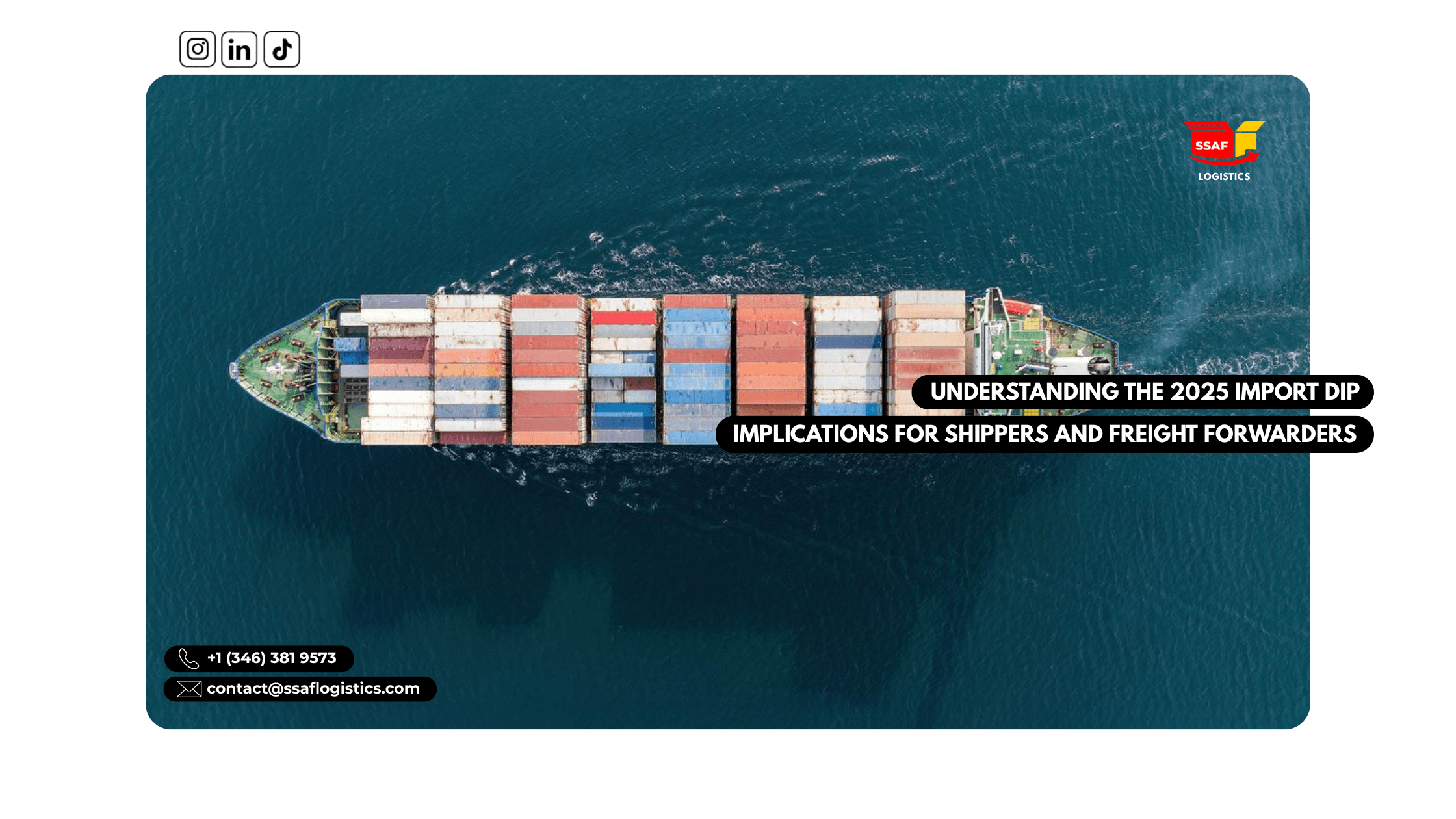Industry News • 9 Oct, 2025 • 4 min read
Understanding the 2025 Import Dip — Implications for Shippers and Freight Forwarders

By Andrea Davila
What It Means for Global Trade and Logistics Partners
Recent forecasts indicate that U.S. containerized imports will remain well below average levels for the rest of 2025, signaling a cooling phase in global trade after several years of volatility. According to industry reports, volumes at major U.S. gateways are expected to stay under 2 million twenty-foot equivalent units (TEUs) per month. A noticeable drop from pre-pandemic averages and the post-COVID rebound seen in 2021–2022.
How We Got Here
Following the global disruptions of the pandemic, American retailers and manufacturers spent much of 2023 and 2024 rebuilding inventories and reconfiguring supply chains. Early 2025 saw an import surge driven by frontloaded orders, as many companies moved to secure goods before potential tariff hikes and labor contract negotiations.
Now that those inventories are well-stocked, the demand for new imports has cooled. Retailers are taking a cautious approach, watching consumer spending patterns and interest rate trends before committing to new orders. Meanwhile, global manufacturers particularly in Asia are adjusting production schedules in response to the slowdown in U.S. demand.
Impacts on the Logistics Landscape
- Lower Port Throughput With fewer inbound shipments, congestion at major U.S. ports such as Los Angeles, Long Beach, and Savannah is expected to ease. While this could improve turnaround times, it also means less volume for carriers, drayage operators, and freight forwarders to handle.
- Carrier and Capacity Adjustments Steamship lines are already responding by blanking sailings (canceling voyages) and consolidating routes to prevent overcapacity. This may create sporadic disruptions in sailing schedules, especially on the Trans-Pacific trade lane.
- Shifting Freight Rates As demand softens, freight rates are expected to decline modestly, but unpredictable factors such as fuel costs, labor actions, or geopolitical risks — could still influence rate stability.
- Strategic Opportunity for Shippers and Forwarders Lower import volumes could offer logistics providers a chance to strengthen relationships, improve efficiency, and secure long-term partnerships. Companies that leverage this period to optimize their warehousing, trucking, and customs clearance strategies will be better positioned when trade volumes rebound.
SSAF Logistics’ Perspective
At SSAF Logistics, we see this evolving market as a reminder of how vital adaptability and foresight are in global logistics. While lower import volumes present short-term challenges, they also open the door to innovation in supply chain design, visibility tools, and sustainable shipping practices.
By working closely with our clients, we continue to provide tailored solutions from freight forwarding and customs brokerage to last-mile delivery and warehousing that help businesses stay agile, even in shifting market conditions.
Looking Ahead
As we move into 2026, trade analysts expect gradual normalization in U.S. import patterns, depending on consumer confidence, economic growth, and tariff policies. For logistics professionals, the key will be maintaining flexibility, enhancing collaboration, and staying proactive in navigating this evolving environment.
Related Blog Posts

![[object Object]](/_next/image?url=https%3A%2F%2Fcdn.sanity.io%2Fimages%2Fj6rggeis%2Fproduction%2Fadc720354d91283f487d5edc2816965a0ad6bf93-2240x1260.png&w=3840&q=75)
![[object Object]](/_next/image?url=https%3A%2F%2Fcdn.sanity.io%2Fimages%2Fj6rggeis%2Fproduction%2F89f69be22b9697aa108f924e0ed8c9e0c826c9e2-2240x1260.png&w=3840&q=75)
![[object Object]](/_next/image?url=https%3A%2F%2Fcdn.sanity.io%2Fimages%2Fj6rggeis%2Fproduction%2F06b53b6819032e45310238fa8e64d64174e6795f-2240x1260.png&w=3840&q=75)
![[object Object]](/_next/image?url=https%3A%2F%2Fcdn.sanity.io%2Fimages%2Fj6rggeis%2Fproduction%2F3b9561b340b9b4fa79ce675d52de305ea7ae475f-2240x1260.jpg&w=3840&q=75)